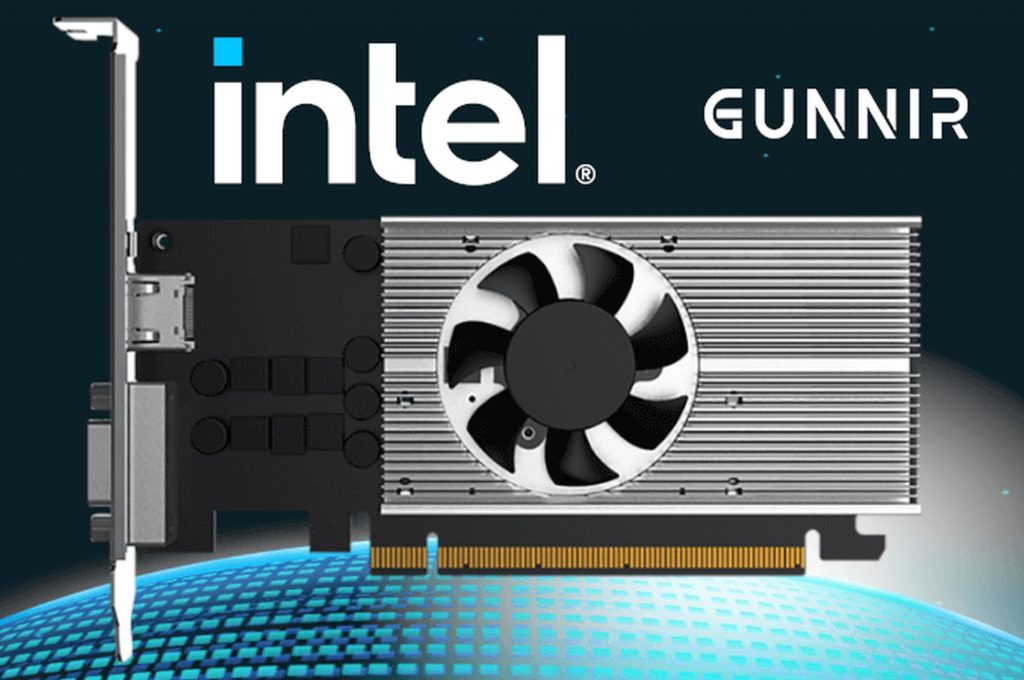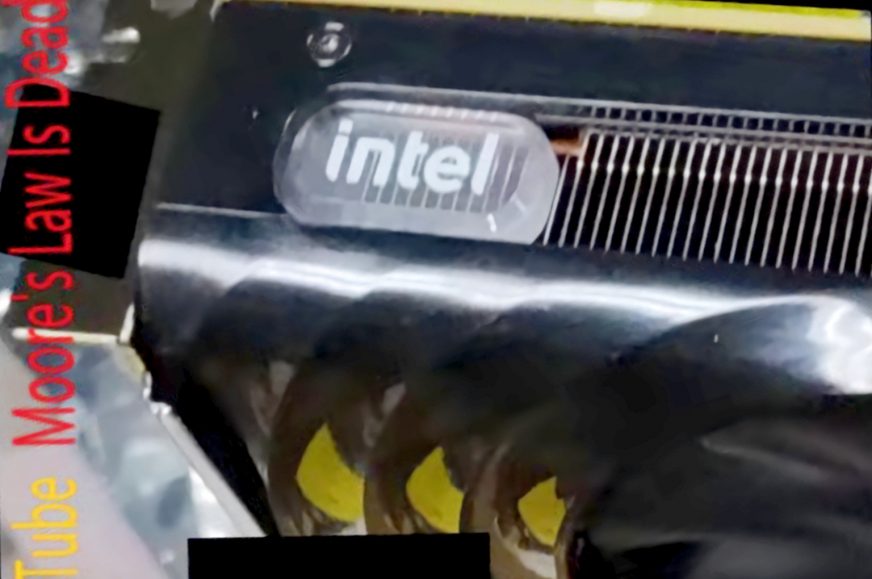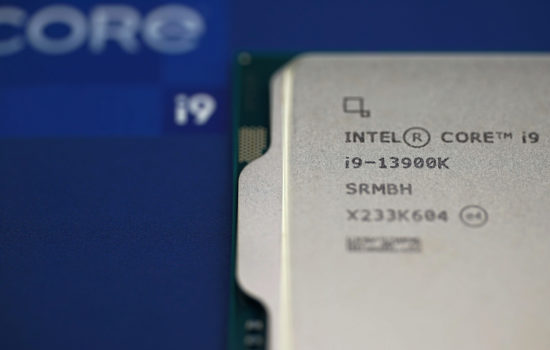Performance of Intel's graphics leaked
Data on the performance of two of Intel’s gaming graphics cards with the DG2/Xe HPG architecture have been leaked: cheaper cards could compete with the GeForce GTX 1650 to GTX 1650 Super, mainstream cards with 448 EU are expected to be just behind the RTX 3070. Which means that a full-fat version with 512 EU could be even faster. Intel thus could have a chance to take hold in a large parts of the gaming graphics market.
Quite a lot of expectations is now being placed in Intel’s planned entry into the market of dedicated gaming graphics cards. On the one hand, this could give a vital competitive impulse to an area that has been in the hands of more or less only two actors for around 20 years, but in today’s situation, it would also help increase the absolute number of GPUs produced and entering the gaming market, which neither Nvidia nor AMD are capable to fully supply at the current time.
In this context, we are very interested in what Intel will show with the upcoming second generation of dedicated “DG2” GPUs , which have the Xe HPG architecture and are supposed to introduce chips with relatively high performance that will be capable of competing with mainstream GeForce and Radeon graphics cards. And there has now been a fresh leak of how that performance (and the specifications) of these cards might turn out.
Mainstream Xe: competitor to RTX 3070?
This information has been shared by a Twitter leaker Tum Apisak, and its source may likely be from a less known/monitored Asian forum, which means the numbers were not directly measured by him. Tum Apisak reports performance for two Intel Xe HPG cards – a lower-performance and probably relatively cheap card with 1024 shaders (128 EU) and a higher-performance model with 3584 shaders (448 EU). This should not be the highest performing card in Intel’s hand, because the chip used should actually contain 512 EU (4096) shaders, and such config will probably get released as Intel’s top model.
Read more: Leaked images of Intel Xe HPG gaming graphics. Performance of ~RTX 3070 Ti?
The higher performance card with 448 EU/3584 shaders reportedly runs at 1.8 GHz, and achieves roughly 8% lower performance than Radeon RX 6700 XT (it is stated that the Intel DG2 should achieve 92% of the performance of AMD’s mainstream card). According to older leaked bits, this card should have 256-bit GDDR6 memory.
It is not stated what benchmark was used, or whether this is even an average performance across multiple tests, but the GeForce RTX 3070 reportedly has only 97% of the performance of the Radeon RX 6700 XT in this testing, which is atypical (except for some games, such as Assassin’s Creed Valhalla). This makes us suspect that the numbers might be results in 3DMark Fire Strike Ultra where the cards score roughly similarly to this. So keep in mind that in other games or even on average, the Intel card’s ranking could vary somewhat.

However, if a slower model with 3584 shaders can climb to such a rank, then the full version with 4096 shaders should already have a chance to match the GeForce RTX 3070 (and Radeon RX 6700 XT) or even beat them by a bit. These results from Tum Apisak are probably still taken with ES samples and not with final hardware, which could have slightly higher clock speed and also possibly drivers with higher performance by the time it is released.

A cheap Xe card between GTX 1650 and RTX 3050
The same caveats about benchmark variance and pre-production ES sample nature are also to be taken into account with the results of the second card. That one should be based on a separate smaller chip that has 128 EU (1024 shaders) and this should probably be its full configuration. Tum Apisak states that the clock is 1.9 GHz in the case of this GPU. Earlier information stated that this GPU should have 4GB of GDDR6 and a 64-bit bus, but this has not yet been confirmed.
The cheaper Xe card is said to be up to 14% faster than Nvidia’s GeForce GTX 1650—Apisak says this older Turing generation card is expected to achieve only 88% of Intel’s upcoming mainstream performance. We’ll see if the 1024-shader Intel DG2-128 GPU also fits into the 75W TDP limit or if it’s even more efficient energy-wise, which would be welcome. Of course, Nvidia could release the GeForce RTX 3050 for desktop in the meantime and thus have a lead on Intel again.
These Intel graphics cards are to use the 6nm TSMC manufacturing process and at least the higher model will support ray-tracing effects. And some form of AI acceleration on special computing units is possible or likely, so the graphics could use more advanced AI upscaling similar to DLSS. The chip will also include Intel’s multimedia acceleration tech, like AV1 hardware decoding (and encoding is not out of question either), which is an area that Intel is a leader in. Besides the ray tracing support, we do not yet know the degree of architectural improvement Intel has done to the compute units and fixed-function blocks over the Gen12/Xe LP architecture in Tiger Lake processors and DG1 GPU.

However, there is probably still a long time left until the release of these graphics cards, so the unavailability of GPUs in stores will not be solved by their coming anytime soon. Availability on the market is probably due in the final months of this year, or at the beginning of next year (if Intel handles the launch similarly to competitors and does not start the sales of all models of a generation at once, instead opting for a staggered launch).
Sources: Tum Apisak, VideoCardz
Translated, original text by:
Jan Olšan, editor for Cnews.cz











